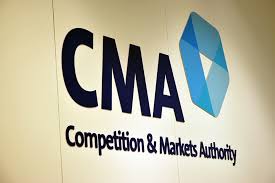
According to officials, the competition among fuel merchants is “failing consumers” because drivers continue to pay excessive prices to fill up their tanks.
An update on the Competition and Markets Authority’s (CMA) monitoring of the fuel market revealed that the cost to all motorists from the previously identified increase in retail fuel margins since 2019 was over £1.6 billion in 2023 alone. This information was provided in the context of the CMA’s monitoring of the fuel market.
According to the findings of the watchdog from the previous year, motorists had overpaid by £900 million in 2022 at supermarket fuel sites alone.
In addition to this, the Competition and Markets Authority (CMA) declared that it would provide separate updates in the autumn about its work concerning the pricing of baby infant formula as well as supermarket loyalty systems.
It went on to say that there was little evidence to suggest that the loyalty prices offered by supermarkets may mislead customers, contrary to what consumer groups have generally stated.
As a result of the regulator’s investigation into fuel prices, action has been taken with the intention of enhancing competition; nonetheless, it has not yet reached its full potential.
It was said by the CMA that it was in favor of continuing attempts to achieve a mandatory fuel price monitoring system in order to assist customers in making well-informed decisions while they are at the gas station.
The Competition and Markets Authority (CMA) stated that its temporary price data-sharing mechanism covers barely forty percent of service stations, despite the fact that the new administration is moving forward with plans for Pumpwatch.

It was acknowledged that it was not comprehensive enough to be utilized by map applications or satellite navigation systems in order to provide consumers with correct and up-to-date information.
Following allegations of gasoline profiteering made by motoring groups for a considerable amount of time, the agency has released its third monitoring report.
After the COVID epidemic, supermarket chains began investing in the cost of household basics instead of using gasoline and diesel as a method of recruiting customers. This took place as the crisis regarding the cost of living gained momentum. Previously, supermarket chains utilized gasoline and diesel as a medium to attract customers.
Independent fuel retailers have, for a long time, refuted claims that prices are excessively high, arguing that those who criticize them are not taking into consideration the additional costs that they incur for things like additional wages and power.
According to the data provided by RAC Fuel Watch, the average cost of unleaded gasoline was 145.69 pence per liter, while diesel was just under 151 pence.
The website of the company showed that pricing ought to be decreasing.
The price of a barrel of Brent crude oil has decreased from $87 to $82 over the course of the past three weeks. Additionally, the dollar’s value versus the pound has experienced a decline, which will also contribute to a reduction in certain prices.
The suppliers that fuel merchants pay have been the focus of a significant amount of regulatory scrutiny, as has the question of whether or not lower prices are being passed on to customers.
“Last year, we discovered that competition in the road fuel market was failing consumers, and we published proposals that would revitalise competition among fuel retailers,” said Sarah Cardell, the chief executive officer of the Competition and Manufacturing Association (CMA).
It has been a year, and drivers continue to pay excessively high rates.
We would like to collaborate with the government in order to implement our suggestion of a real-time fuel finder program in order to stimulate greater levels of competition among merchants.
“This will put the power in the hands of drivers who can compare fuel prices wherever they are, sparking greater competition.”